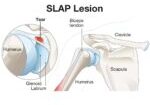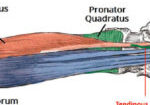Les meilleures méthodes pour obtenir des CEU en ergothérapie en ligne
Classé sous Non classé
Introduction aux CEU en ergothérapie
Maintenir son agrément et ses connaissances à jour dans le domaine de l'ergothérapie n'est pas une option : c'est une exigence professionnelle. C'est là que les unités de formation continue (UFC) entrent en jeu. Ces crédits d'apprentissage essentiels aident les ergothérapeutes à conserver leur agrément, à développer leur expertise et à se tenir au courant des dernières pratiques fondées sur des données probantes.
Que sont les unités de formation continue (CEU) ?
Les unités de formation continue (UFC) sont des unités normalisées utilisées pour mesurer la participation aux activités de formation professionnelle. Pour les ergothérapeutes, chaque UFC équivaut généralement à 10 heures de formation. Ces unités sont exigées par les organismes d'agrément des États et par le Conseil national de certification en ergothérapie (NBCOT).
Pourquoi les CEU sont essentiels pour les ergothérapeutes
Sans obtention de CEU, les ergothérapeutes risquent de perdre leur permis d'exercice. Mais au-delà de la conformité légale, les CEU permettent aux ergothérapeutes de :
- Restez au courant des nouvelles techniques de traitement
- Améliorer les résultats pour les patients
- Approfondir ses connaissances dans des spécialités comme la pédiatrie, la gériatrie ou la neurologie
- Faire progresser leur carrière ou se qualifier pour des promotions

Avantages de l'obtention de CEU en ligne
L'apprentissage en ligne a révolutionné la manière dont les ergothérapeutes acquièrent des CEU. Fini le temps où il fallait se déplacer pour assister à des ateliers ou des conférences. Désormais, tout est accessible depuis votre ordinateur portable ou votre smartphone.
Commodité et flexibilité
L'avantage le plus important est d'apprendre selon votre emploi du temps. Que vous soyez en pause déjeuner ou en train de vous détendre après le travail, les CEU en ligne s'adaptent à votre routine : pas de déplacement, pas de congés.
Rapport coût-efficacité par rapport aux cours en personne
Les prestataires de formation continue en ligne proposent souvent des abonnements mensuels ou annuels, ce qui les rend plus abordables à long terme. Pas de séjour à l'hôtel, de frais de déplacement ni de repas au restaurant : juste de l'apprentissage pur.
Accès à des sujets et des cours spécialisés
De nombreuses plateformes en ligne proposent des sujets de niche que vous ne trouverez pas dans un séminaire local. De la thérapie d'intégration sensorielle à l'éthique de la télésanté, les formations continues en ligne vous offrent variété et profondeur.
Accréditation et conformité
Comment s'assurer qu'un fournisseur de CEU en ligne est approuvé
Vérifiez toujours si la plateforme est Approuvé par l'AOTA ou reconnu par votre conseil des licences d'ÉtatLa plupart des sites Web réputés affichent clairement leurs accréditations sur les pages de cours.
Exigences en matière de licences d'État à connaître
Chaque État a des règles différentes. Par exemple :
- La Californie exige que les cours soient approuvés par le California Board of Occupational Therapy (CBOT).
- Le Texas accepte les cours des prestataires approuvés par l'AOTA.
Conseil de pro : Ajoutez le site Web du conseil ergothérapique de votre État à vos favoris pour rester informé.
Comment choisir le bon cours
Évaluation du contenu du cours
Ne vous contentez pas de survoler le titre : lisez les objectifs du cours. Sont-ils pertinents pour votre rôle actuel ou vos objectifs ? Vous mettront-ils au défi et vous formeront-ils ?
Vérification des qualifications de l'instructeur
Recherchez des formateurs possédant une expérience clinique concrète et des certifications reconnues. Un formateur qualifié apporte crédibilité et qualité.
Adapter les CEU à vos objectifs de carrière
Si vous travaillez en pédiatrie, une formation en ergothérapie gériatrique pourrait ne pas être utile à votre pratique immédiate. Choisissez des cours adaptés à votre parcours.
Modèles de coûts et d'abonnement
Cours CEU gratuits ou payants
Bien que certaines plateformes en ligne proposent des cours CEU gratuits, elles comportent souvent des limitations telles que :
- Moins de sujets avancés
- Accès limité aux certificats d'achèvement
- Mises à jour moins fréquentes du matériel de cours
Les plateformes de CEU payantes, quant à elles, offrent un apprentissage structuré, un contenu actualisé et un éventail de sujets plus large. Vous avez également plus de chances d'obtenir des certificats immédiatement, ce qui est important pour la documentation et la conformité.
Abonnements annuels ou paiement à la formation
Certains modèles de tarification populaires incluent :
- Abonnements annuels – Des UFC illimitées pour un forfait annuel fixe. Idéal pour les thérapeutes qui prévoient de suivre plusieurs formations. Cliquez ici. ICI pour voir tous les niveaux d'adhésion à la Hand Therapy Academy.
- Paiement par cours – Idéal pour ceux qui n'ont besoin que de quelques unités de formation continue (UFC) pour satisfaire à leurs exigences de renouvellement. Voici la liste complète. Cours CEU avec accès à vie.
Conseils pour rester conforme et organisé
Suivez efficacement vos CEU
Conservez un enregistrement numérique ou physique de :
- Noms des cours
- Dates d'achèvement
- Nombre d'UCE gagnées
- ID d'approbation du fournisseur
Applications similaires Courtier CE peut enregistrer automatiquement vos CEU dans les États participants.
Éviter les pièges courants en matière de licences
- Délais non respectés pour le renouvellement de la licence
- Suivre des cours non approuvés
- Défaut de conservation des documents pour les audits
Prenez l’habitude de vérifier vos dates limites d’obtention de permis chaque année et de programmer des rappels au moins 30 jours à l’avance.
Exigences techniques et formats d'apprentissage
Apprentissage vidéo, interactif et textuel
Les formats des CEU en ligne varient :
- Conférences vidéo offrir une sensation d’apprentissage plus traditionnelle.
- Simulations interactives aide à l'engagement.
- Modules basés sur du texte convient à ceux qui préfèrent lire à leur rythme.
Choisissez le format qui correspond le mieux à votre style d’apprentissage.
Compatibilité avec les appareils mobiles et de bureau
La plupart des plateformes sont adaptées aux mobiles, ce qui vous permet de :
- Regardez les cours en déplacement
- Télécharger des documents hors ligne
- Synchroniser la progression sur tous les appareils
Assurez-vous que le fournisseur prend en charge les appareils que vous prévoyez d’utiliser.
Questions fréquemment posées
1. De combien d’UFC ai-je besoin par an en tant qu’ergothérapeute ?
La plupart des États exigent 12 à 36 unités de formation continue Tous les 1 à 3 ans. Vérifiez toujours auprès de votre conseil d'administration.
2. Les CEU en ligne sont-ils acceptés par tous les États ?
Oui, si le fournisseur est approuvé par l'État ou Accrédité AOTAVérifiez toujours la politique CEU de votre état.
3. Puis-je compléter tous les CEU en ligne ?
Dans de nombreux États, oui. Cependant, certains exigent une combinaison de formations continues en présentiel et en ligne. Lisez attentivement les conditions d'obtention de votre permis d'exercice.
4. Comment savoir si un fournisseur de CEU est légitime ?
Rechercher:
- Approbation de l'AOTA
- Reconnaissance du conseil d'État
- Plans de cours transparents et biographies des instructeurs
5. Quelle est la meilleure plateforme pour des CEU abordables ?
HandTherapyAcademy.com propose différents niveaux d'adhésion ainsi que des cours individuels et est un favori parmi les thérapeutes pour le coût et la variété du contenu.
Conclusion : Gardez votre permis actif et vos compétences à jour
La formation continue n'est pas une simple formalité juridique : c'est une opportunité de progresser, de rester pertinent et d'offrir des soins de premier ordre à vos clients. CEU en ergothérapie en ligne, vous pouvez répondre à vos exigences de licence selon votre emploi du temps, à votre rythme et souvent à un coût inférieur à celui des cours en personne.
N'attendez pas que les délais approchent à grands pas : commencez à explorer les plateformes CEU dès aujourd'hui et prenez le contrôle de votre développement professionnel.
Plus à lire
Qu'est-ce qu'une déchirure par claque ? Déchirure antérieure à postérieure du labrum supérieur
Qu'est-ce qu'une lésion SLAP ? Une lésion labrale supérieure, antérieure et postérieure (SLAP) est une lésion affectant la partie supérieure du bourrelet glénoïdien, là où le tendon du chef long du biceps est ancré (Levasseur et al., 2021). La déchirure survient généralement en arrière et s'étend en avant au niveau de l'encoche glénoïdienne moyenne, qui peut être examinée par arthroscopie de l'épaule (Kim et al.).
En savoir plusDouleur au pilier après une chirurgie de libération du canal carpien
Douleur pilier après une chirurgie de libération du canal carpien La chirurgie de libération du canal carpien (CTR) est une procédure courante, la majorité des patients étant satisfaits de ses résultats. Cependant, chez certaines personnes, une complication temporaire connue sous le nom de « douleur pilier » peut survenir, affectant environ 131 TP3T des personnes subissant une CTR. La douleur pilier se manifeste au niveau de l’éminence thénar et de l’hypothénar…
En savoir plusCicatrisation des tissus mous en pédiatrie
Par : Chelsea Gonzalez Pourquoi les clients pédiatriques n'ont-ils souvent pas besoin d'autant de thérapie de la main pour les blessures des tissus mous que les adultes ? La réponse simple : les enfants ont des tissus mous très élastiques, qui peuvent reprendre leur forme et leur position d'origine après étirement. Cette élasticité se perd avec le temps à mesure que les fibres de collagène se dilatent et que leur interne…
En savoir plusUn fait amusant d'un étudiant en thérapie de la main
Par : Ammie Ingwaldson Niveau 2 Le travail sur le terrain dans une clinique de thérapie de la main est une expérience d'apprentissage rapide et continue. L’exemple parfait de cela s’est produit la semaine dernière alors qu’il observait un thérapeute proposer à un client son programme CMC contre l’arthrite à domicile. Le thérapeute expliquait au client comment opposer son pouce à son petit…
En savoir plusInscrivez-vous pour recevoir des mises à jour directement dans votre boîte de réception !
Inscrivez-vous avec nous et nous vous enverrons régulièrement des articles de blog sur tout ce qui concerne la thérapie des mains, des notifications chaque fois que nous mettons en ligne de nouvelles vidéos et tutoriels, ainsi que des documents, des protocoles et d'autres informations utiles.






